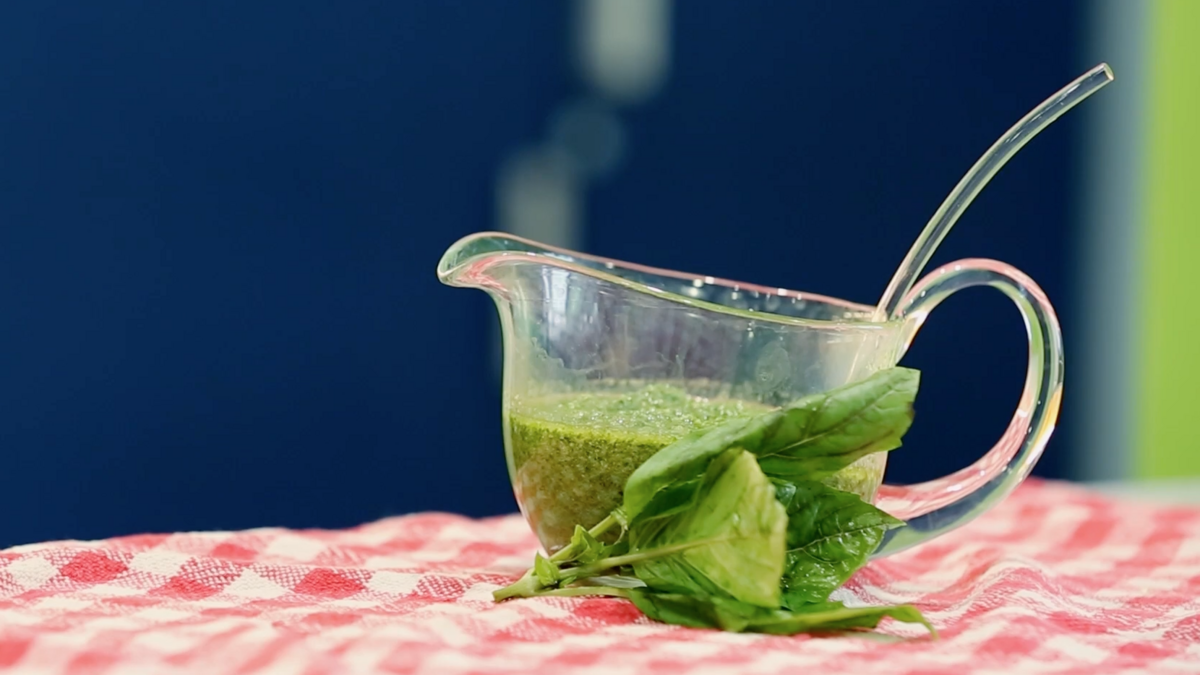Now that Mardi Gras has passed and the last of the Valentine’s Day chocolates have been polished off, it’s time to get back on the wagon with those New Year’s resolutions. But eating healthier doesn’t mean you have to resign yourself to a life devoid of taste, said ASU Clinical Professor of nutrition Christina Shepard.
One of her favorite ways to ensure she’s getting enough leafy greens in her diet is by making pesto. You can use anything from arugula to spinach to the tops of carrots as the base of pesto — the garlic and olive oil go a long way in making up for any acidity or lack of flavor in the greens.
“So you’re still getting the health benefits of these nutritious but sometimes bitter greens, with great flavor,” Shepard said.
This spring, she’s heading to Italy as part of ASU’s Global Intensive Experience (GIE) program, where she’ll be teaching 18 students about the benefits of the Mediterranean diet through cooking classes and tours of produce markets and food production facilities.
Research has shown the Mediterranean diet is both heart-healthy and beneficial for cancer prevention, Shepard said. It’s high in fruits, vegetables, lean meats, seafood and healthy fats, such as olive oil, nuts and legumes — meaning pesto is A-OK if you’re adhering to it.
And pesto is both a universal and forgiving dish. Shepard has used it as a topper for chicken and salmon, and as a sauce for pizza and pasta. You can also add or eliminate ingredients to suit your taste, and it can be frozen to make it last longer.
“It’s hard to go wrong with pesto,” she said.
Shepard took some time to demonstrate for ASU Now just how easy it is to make.
Traditional Basil Pesto Sauce
Yield: makes 1 heaping cup
Ingredients:
2 cups packed fresh basil, stems removed
3 cloves garlic, minced
1/4 cup pine nuts (optional)
1/3 cup packed fresh chopped parsley
1/3 cup grated Parmesan cheese (optional)
1/2 cup olive oil
1/2 teaspoon salt, or to taste
1/4 teaspoon pepper, or to taste
Directions:
Combine everything but the oil in a blender or food processor. Start slowly and raise the speed until it becomes a smooth paste, slowly drizzling in the oil throughout. You can make large quantities and freeze in small portions. To defrost: set out to thaw or microwave briefly.
Arugula Pesto Sauce
Yield: makes 1 heaping cup
Ingredients:
1/2 cup walnuts (optional)
2 cups packed arugula leaves, stems removed
2 garlic cloves, minced
1/2 cup olive oil
1/2 cup fresh grated Parmesan cheese (optional)
1/2 teaspoon salt, or to taste
Directions:
Toast the walnuts in a pan over medium heat until lightly brown, or heat in a microwave on high heat for a minute or two until you get a roasted flavor. Combine the walnuts, arugula, garlic and salt into a food processor. Pulse while drizzling in the olive oil. Remove the mixture from the processor and put it into a bowl. Stir in the Parmesan cheese. Serve on bread, crackers, as a topping for pizza or as a sauce for chicken or fish.
To learn more about the 250-plus study abroad programs in more than 65 different countries offered at ASU, see the Study Abroad Office website. Top video by Deanna Dent/ASU Now
More Health and medicine

ASU, Mayo Clinic forge new health innovation program
Arizona State University is on a mission to drive innovations that will help people lead healthier lives and empower health care professionals to develop novel new health solutions. As part of that…

Innovative, fast-moving ventures emerge from Mayo Clinic and ASU summer residency program
By Georgann YaraIn a batting cage transformed into a custom pitching lab, tricked out with the latest in sports technology, Charles Leddon and his Mayo Clinic research teammates scrutinize the…
Is ‘U-shaped happiness’ universal?
A theory that’s been around for more than a decade describes a person’s subjective well-being — or “happiness” — as having a U-shape throughout the course of one’s life. If plotted on a graph, the…
